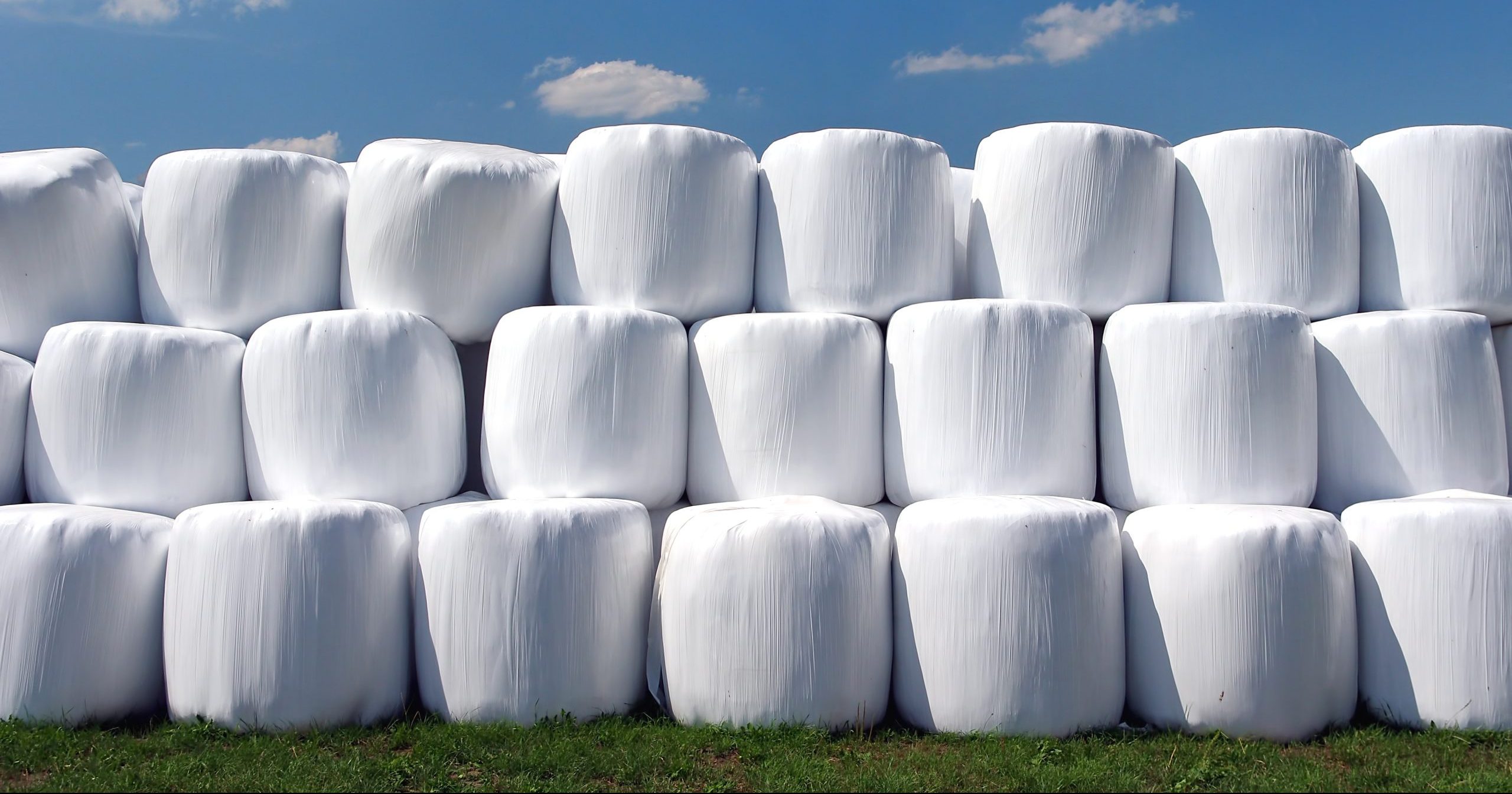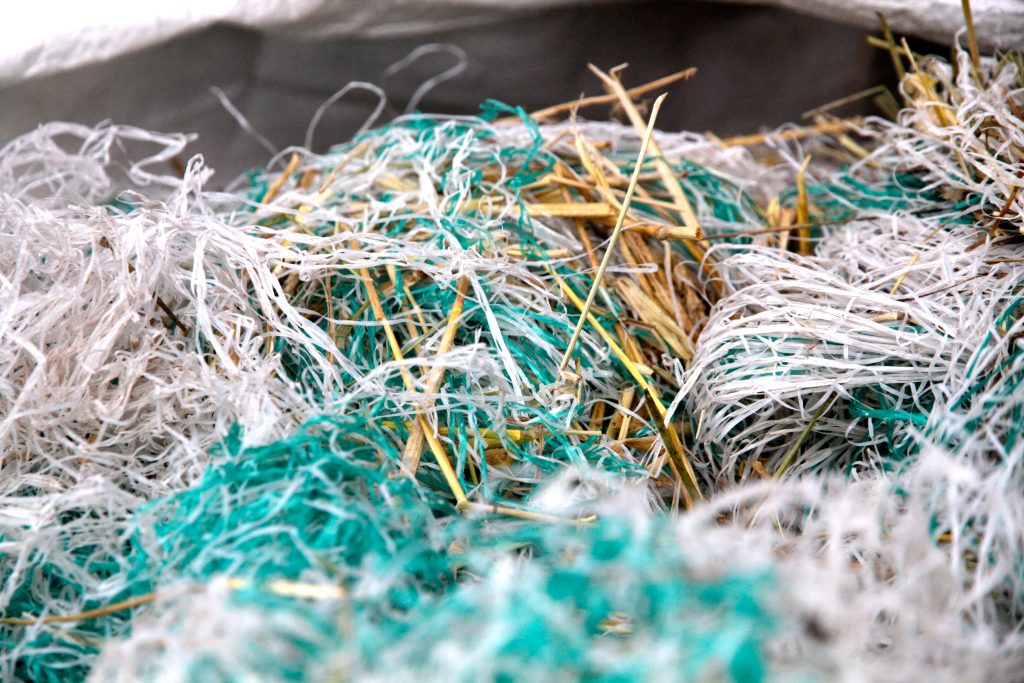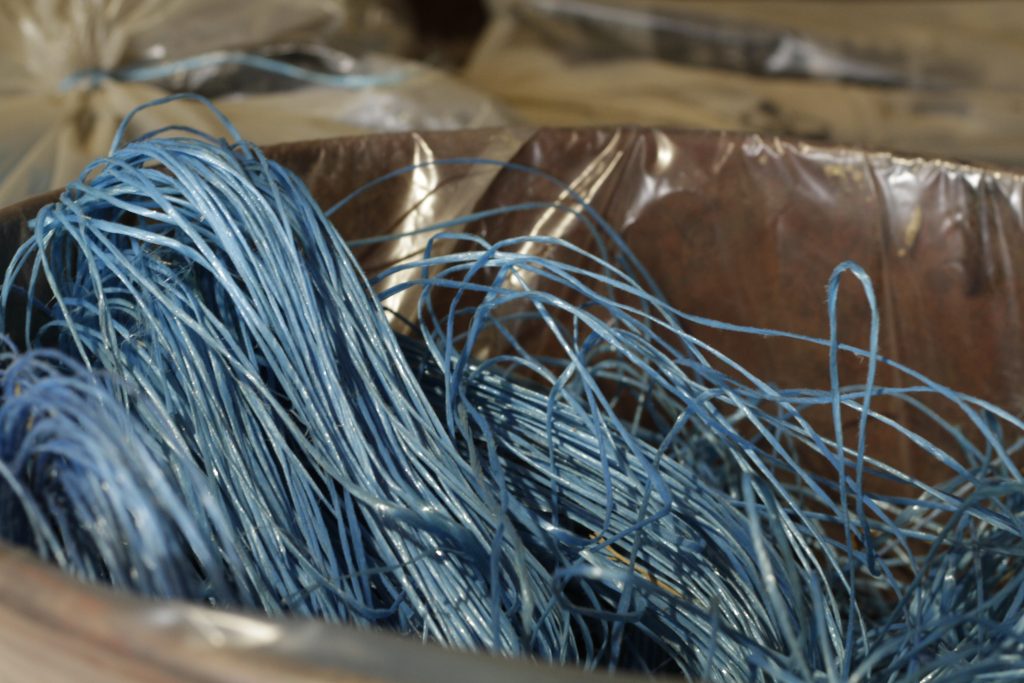AB Direct - Steers
Rail: ---
AB Direct - Heifers
Rail: ---
US Trade- Steers
Rail: 290.00 (IA)
US Trade - Heifers
Rail: 290.00 (IA)
Canadian Dollar
0.02

What are you doing with your used twine and plastic?
Plastics are integral to most of our businesses, whether you are wrapping up bales or covering your silage pit. They are cheap, convenient, and resilient, which makes them useful but also difficult to get rid of.
In the past, the most common practice for dealing with used ag plastics was to burn it – a practice which is not legal, is at odds with our industry’s sustainability claims and our image as stewards of the land. Today, while some producers choose to stockpile or bury ag plastics on-farm, others are fortunate to have waste commissions or municipalities that will accept it at landfills, recycling is slowly becoming the solution for farmers across Canada. Saskatchewan and Manitoba have permanent recycling programs in place for grain bags, Manitoba added one for twine in 2021, and there is also momentum building in Alberta.
How ag plastics recycling works in Alberta – challenges and opportunities
Following resolutions made during ABP’s producer meetings in 2016, looking for solutions to on-farm ag-plastic waste (and similar motions being made at other organizations like the Ag Service Boards, Rural Municipalities of Alberta and other commodity groups), the Agricultural Plastics Recycling Group (APRG) was formed.
One of the main outcomes of the APRG’s work to date is the Alberta Ag-Plastic. Recycle-It! pilot, a 3-year recycling program funded by the Alberta Government, administered by ABP and operated by Cleanfarms. Its purpose is to study the costs, logistics and barriers to recycling grain bags and twine in Alberta. It began collection with 20 sites in 2020 and currently has 90 collection sites across the province.



To learn more about the Alberta Ag-Plastic. Recycle-It! pilot and to see if you have a collection site in your municipality, visit Cleanfarms. (APRG)
Cleanfarms is also operating a separate pilot in Lethbridge County focused on silage plastic. They have partnered with some feedlots and dairies to trial manual on-farm compactors to densify the silage plastic for transport.
This pilot looks very promising. Silage plastic is the same plastic as grain bags and the barriers to recycling it are just a matter of the clean collection and densification of the individual pieces. For more information on this pilot, reach out to Alberta Cattle Feeders Association, Alberta Milk or Cleanfarms.
Alberta grain bag and baler twine pilot sees extension
As pilots are temporary programs, the APRG has also been advocating for a transition to a permanent recycling program for twine and grain bags, with other ag plastics to be considered later. After studying numerous options, the APRG is recommending an Extended Producer Responsibility (EPR) model.
‘Producer’ in the EPR sense is not the farmer. Rather, it refers to the producers and/or first sellers of a product, who have the “extended responsibility” for collection and appropriate disposal of their products
Hear Assar Grinde in conversation with guest host Brodie Haugan on ag plastics in the province, in our March episode of The Bovine.
EPR legislation was just introduced in Alberta in the 2021 fall sitting. The first products to be brought into the regulation will be for household packaging, paper, plastics, and hazardous waste. The APRG is asking that ag plastics be considered for future inclusion, with grain bags and twine given priority, followed by other ag plastics.
While EPR is a simple idea (that industry manages both the sale and recycling of a product) there is a lot of flexibility in how industry designs and runs the program(s). But, no matter how it is designed, the cost of the program (in the end) will be paid by the users of the product, either included in the price of the product, or visibly shown as an Environmental Handling Fee at point of sale, as it is done in Saskatchewan and Manitoba.
There are a lot of questions farmers have about how EPR works, the costs involved and what to do with other plastics like netwrap. I have probably asked all the same questions during my time with the APRG. To assist in answering these questions, the APRG and Cleanfarms have created an FAQ document as well as the monthly Ag-Forward information newsletter series. The Ag-Forward series gives a concise background on ag plastics recycling and EPR, and will be focusing on a specific plastic in each of the upcoming months.
“A circular economy is one where the full value of a plastic product is used across multiple life cycles, not just used once and discarded into landfills or waterways.”
Government of Alberta – Natural gas vision and strategy
Viewed in the larger context, it seems inevitable that recycling our agricultural plastics will become standard practice. Not only do our neighbouring prairie provinces already have permanent programs in place, but the Alberta government’s Natural Gas Strategy includes the creation of a Circular Plastics Economy, establishing Alberta “as the Western North America Centre of Excellence for plastics diversion and recycling by 2030.” Alberta is already home to two of the three grain bag recyclers in North America – Crowfoot Plastics near Hussar and PolyAg Recycling in Bashaw, and there are Alberta entrepreneurs creating innovative products with recycled ag plastics.
A circular plastics economy requires a shift in thinking, from seeing used plastic as garbage to seeing it as a resource. I see no reason why Alberta can’t become the leader in that field and agriculture should be a part of it.
In the end, I don’t think recycling will be the only solution. Better products like biodegradable netwrap, hemp twine, edible sheet plastic, and other technologies (some of which are also being worked on here in Alberta) will help in reducing our on-farm waste. But to encourage the development of new products and make them more cost competitive, it helps if we are paying the full cost for our plastics, including disposal. So, while yes, there is a cost associated with recycling programs, I would be ok with paying it if there is an environmentally responsible home for my used plastic when I am done with it.
And just maybe, in the near future, there will be a netwrap I won’t have to bother trying to take off my frozen bales.
The Agricultural Plastics Recycling Group (APRG) was formed in 2017 and comprises more than 20 organizations representing agricultural producers, retailers, manufacturers, municipalities, non-profits and others. The group oversees the Recycle-It! pilot and is committed to finding solutions to manage agricultural plastics. aprg.ca
Cleanfarms is an agricultural industry stewardship organization that contributes to a healthier environment and a sustainable future for Canadian agriculture by developing and operating programs across Canada specifically for farmers that collect used ag plastics for recycling, as well as other ag-related used and unwanted materials for recycling or safe disposal. cleanfarms.ca
This article was first published in Volume 2 Issue 2 of ABP Magazine (April 2022). Watch for more digital content from the magazine on ABP Daily.
Leave a Comment
Add abpdaily.com to your home screen
Tap the menu button next to the address bar or at the bottom of your browser.
Select ‘Install’ or ‘Add to Homescreen’ to stay connected.



Share this article on
About the Author
Assar Grinde is a cow-calf producer in Ponoka County, a former Director with ABP and is ABP's representative on the Agricultural Plastics Recycling Group.